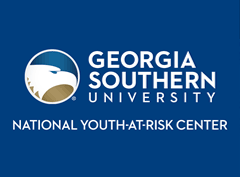Using One to One Technology To Level the Playing Field for Rural Students
Location
Rural Strand - Bowie C
Focused Area
Youth-At-Risk in Rural Settings
Relevance to Focused Area
As the Principal of a school in a rural district, I have had to face the challenge of improving achievement for students who face the barriers of limited access to resources beyond the school day, long bus rides totaling 2 or more hours per day, and the lack of organized community activities present in traditional neighborhood settings. In addition, motivational barriers often exist for rural students to understand the relevance and relationships of traditional school educational environments to their lives. We have successfully implemented an affordable one-to-one technology model at North Harford Middle School that has shown excellent results in both student achievement and motivation. This motivation extends to all stakeholders including students, teachers, parents, administrators and the community. The proposal provides a realistic model for leaders to follow to make the one-to-one technology dream a reality.
Primary Strand
Academic Achievement & School Leadership
Relevance to Primary Strand
North Harford Middle School has implemented the one-to-one device model to address many needs and barriers specific to the rural student. Our school has no walkers and is geographically very large. The technology initiative addresses the following barriers faced by rural students.
- Long bus rides often totaling 2+ hours per day
- Lack of community resources such as libraries, community centers and other governmental resources.
- Lack of social and recreational opportunities beyond the school day
- Motivating the rural students and the community to understand the value and need of traditional education
Brief Program Description
How can teachers, principals and district leaders possibly afford a one-to-one device model in these challenging budgetary times? The answer can be found in this case study of a rural school who built a one-to-one device program from the ground up utilizing only the current resources provided annually by the district. Participants will leave with resources needed to create a technology plan to fit their school environment and a blueprint for building the support from stakeholders to implement the plan and make it a reality.
Summary
This proposal stems from the successful implementation of a one-to-one device program at a rural middle school. This program was implemented at no additional cost to the district beyond the normal budget. The program will describe the importance of collecting data and creating a careful plan well in advance of the purchase of devices. A variety of strategies and resources will be shared for gaining the support of all stakeholders to include students, teachers, parents, administrators, the community and district offices will be provided.
Testimonials from actual students, teachers, parents, administrators, central office employees and community members via video comments will provide evidence of the importance of building this coalition, including them in the plan, and maintaining a relationship with all stakeholders throughout implementation.
This presentation will offer ideas for multiple types of devices, as opposed to a "one size fits all model". Particular emphasis is placed on the rapidly changing availability and expense of various devices and the importance of reviewing the technology plan with stakeholders annually.
Evidence
Recently, The Alliance For Excellent Education and SCOPE (Stanford Center for Opportunity Policy in Education) published a report entitled "Using Technology to Support At-Risk Students' Learning. This report synthesizes a multitude of research which points to the value of implementing a one-to-one device model to break down many of the barriers to learning for At-Risk students. The report can be accessed at the link provided.
https://edpolicy.stanford.edu/sites/default/files/scope-pub-using-technology-report.pdf
This report synthesizes more than 70 research studies and provides specific examples and recommendations for the implementation of technology with at-risk students that parallel the proposal for this presentation.
Format
Individual Presentation
Biographical Sketch
Dr. Karl Wickman is the Principal of North Harford Middle School in Harford County Maryland, where he has served as Principal for 8 years. The school is a rural Middle School with 1000 students all of whom commute to school via bus or car.
He received his Doctorate in Leadership and Innovation from Wilmington University in Delaware in 2014. His published dissertation "Implementing a Cycle of Managed Decisions: Effective Principal Leadership in the 21st Century" serves as a research based model for 21st Century Principals to use in their day to day lives.
Dr. Wickman has served as both an appointed and elected school board member in his home district in rural Southeastern Pennsylvania.
He has a passion for the implementation of technology in the classroom to improve achievement. He holds a black belt in Tae Kwon Do and has completed six marathons.
Start Date
10-24-2016 3:45 PM
End Date
10-24-2016 5:15 PM
Recommended Citation
Wickman, Karl E. Ed.D., "Using One to One Technology To Level the Playing Field for Rural Students" (2016). National Youth-At-Risk Conference, West (2015-2017). 6.
https://digitalcommons.georgiasouthern.edu/nyar_vegas/2016/rural/6
Using One to One Technology To Level the Playing Field for Rural Students
Rural Strand - Bowie C
How can teachers, principals and district leaders possibly afford a one-to-one device model in these challenging budgetary times? The answer can be found in this case study of a rural school who built a one-to-one device program from the ground up utilizing only the current resources provided annually by the district. Participants will leave with resources needed to create a technology plan to fit their school environment and a blueprint for building the support from stakeholders to implement the plan and make it a reality.
